Steel radiators are a great solution if you are building a country house or want to change the heating system in your cottage or private house. This type of heating devices is the most common for owners of private houses. This can be explained by the fact that they are relatively inexpensive, and in comparison with aluminum radiators, they have higher heat transfer parameters. In the photo you can see options for steel batteries.
Steel heating radiators
General information
Some people ask this question, what is the first thing to pay attention to when choosing steel radiators? The range of steel heaters is very diverse today. On the one hand, there is plenty to choose from, but on the other hand, a large selection can cause a feeling of confusion. Steel radiators, first of all, may differ by the manufacturer. They can also vary in color, size, price category, size or design features. Steel radiators today are quite a worthy replacement cast iron radiators, which not so long ago led in popularity.
A steel radiator is a heating device that is a single panel rectangularmade of two steel sheets. These sheets are welded together and have water channels.
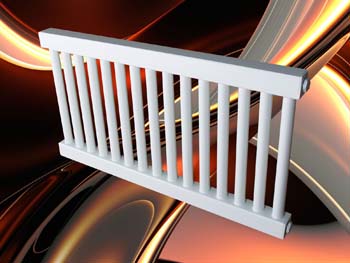
Heating radiators made of steel are not recommended to be installed in such rooms where there is a high level of humidity, thus, they are not suitable for a bathroom. Today, steel heaters can be seen not only in private homes, but also in shops, offices, and country cottages. This is due to their low cost, and at the same time, beautiful and stylish design.
Before deciding on the choice of the manufacturer of the device, it is necessary to find out which manufacturing method was used. The correct manufacturing technique involves the production of the device itself, its coloring, assembly into blocks and packaging.
The cost of steel heating radiators, first of all, depends on their power indicators and sizes. Sometimes some steel radiators with similar parameters are more expensive than others, only because of the more popular brand. Therefore, consider whether it is worth overpaying the extra money. It goes without saying that domestic devices will cost somewhat less than those produced in Europe. But in terms of size and operating parameters, they may not differ or differ, but not significantly.

In order to choose the most suitable radiator, the following nuances must be taken into account:
- More uniform heating of the entire room depends on how deep and low the heater is located.
- It is necessary that the radiator be equipped with an element such as a Mayevsky tap, as this will make it possible to bleed excess air from the system. It is also desirable that the radiator be equipped with taps for interrupting the water. Unforeseen emergencies can arise, and such cranes will come in handy.
- If a heating radiator is installed under a window, then its width should be no less than 50-70% of the width of the window opening.
- In order to make the heating radiator more practical, you can choose a model that is equipped with a thermostat. Such an element can be either manual or automatic.
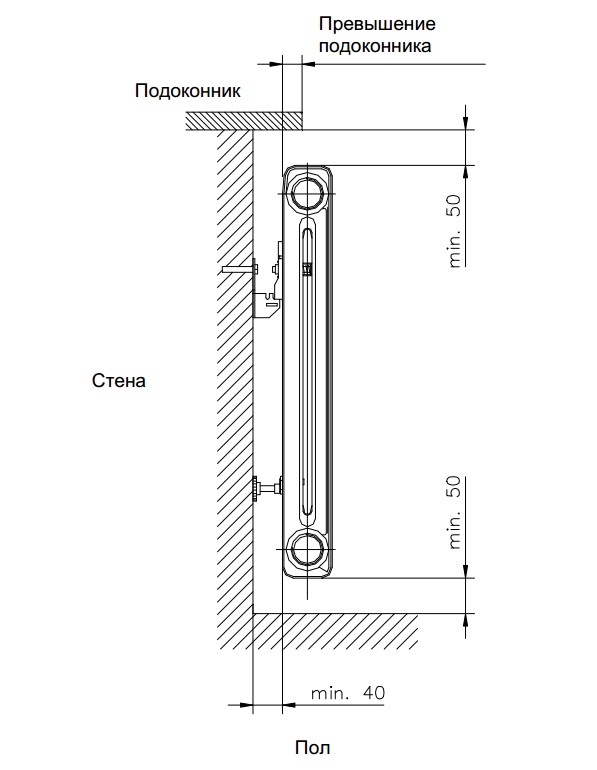
Types of steel radiators, based on their design features
Steel radiators can be of two types:
- Tubular radiators;
- Panel radiators.
Steel panel heaters are a kind of panel that is installed on the floor or attached to the wall. Such metal radiators have a more aesthetic appearance and higher heat transfer rates.
Manufactured panel radiators according to the following scheme: the panel of such devices is welded from two plates, the coolant circulates between these plates. Typically, the plates are 1.2 to 1.5 mm thick. Spot welding is used to connect these plates.
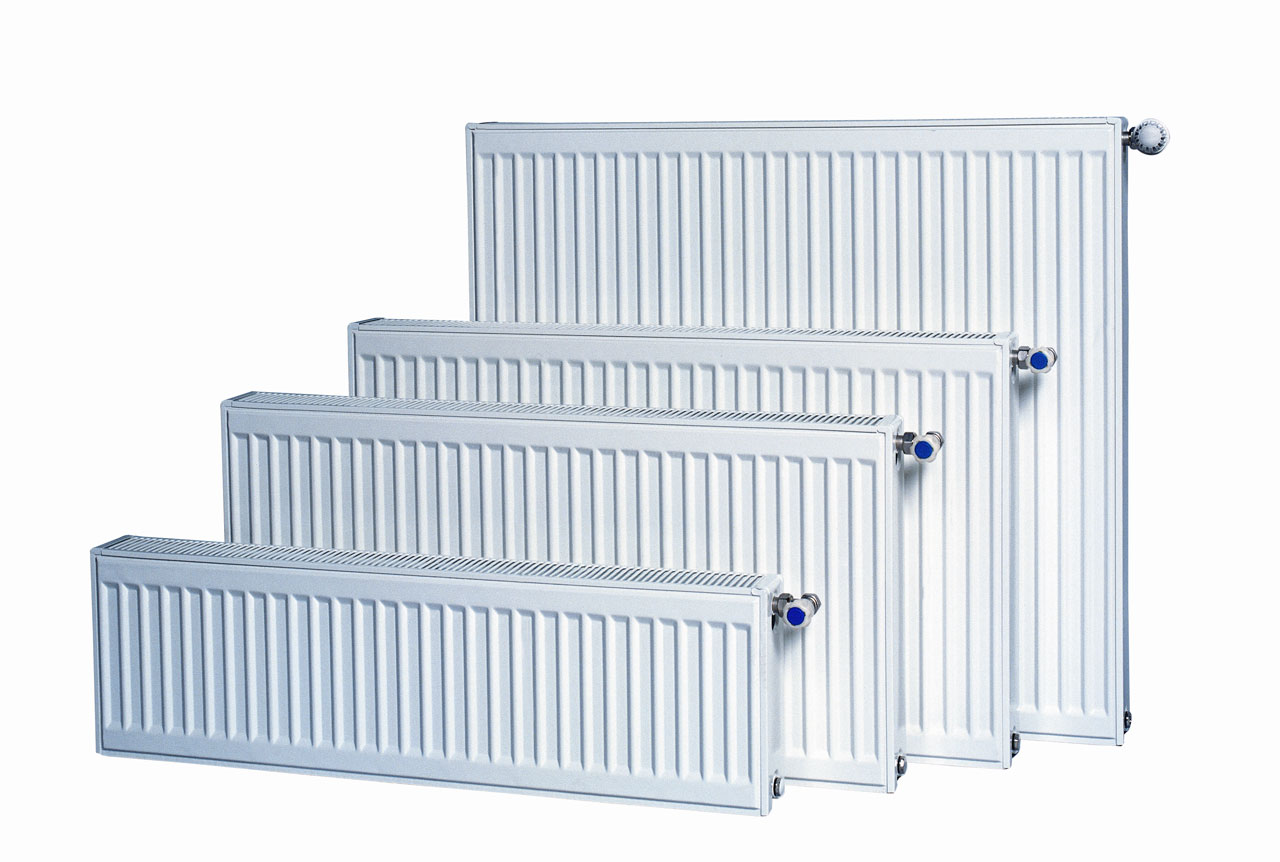
Among the advantages of steel panel radiators, one can single out the possibility of choosing the device with the most suitable dimensions for you.
Panel radiators, in turn, may differ in the way they are connected to the heating system. There are three ways to connect steel panel heating appliances:
- Side connection;
- Bottom connection;
- Universal connection.
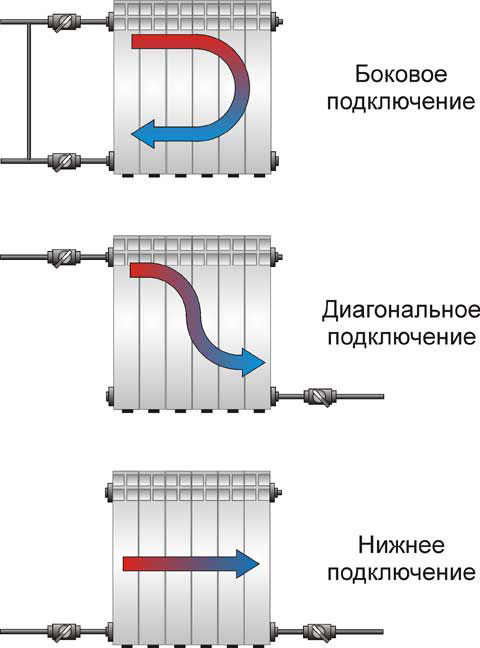
In the case of bottom connection, the heater must be equipped with a built-in thermostatic valve. A thermostat can be mounted on this valve. Thanks to a device such as a thermostat, you can maintain the most comfortable temperature for you.
Metal radiators with a side connection type are considered cheaper. In this case, you can also use the natural circulation of the coolant in the heating system. In addition, such a connection is not as noticeable as the lower one.
Radiators made of multiple panels have a higher heat dissipation. This design allows you to transfer heat only to external planes, therefore U-shaped plates can be welded to their internal surfaces of the device. Thanks to this, it is possible to increase the surface that will give off heat.
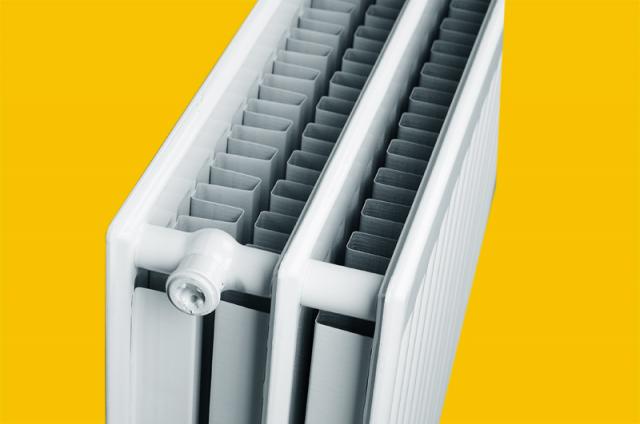
However, three-panel radiators have some drawbacks. First of all, this concerns their weight. By weight category, such devices can catch up with cast iron batteries, which are quite heavy. In addition, such a device will require a larger volume of water, therefore, the effectiveness of thermal control will significantly decrease. In terms of thickness, such radiators bypass even cast iron appliances, since they can be up to 160 mm thick. Another disadvantage is the fact that the inner area of \u200b\u200bthe panel radiator is a little more difficult to clean from dirt.
Steel tubular heating radiators in their appearance are somewhat reminiscent of cast-iron batteries.
Tubular radiators are most suitable for buildings of an administrative type or houses with one or more floors. Tubular radiators are capable of withstanding a working pressure of no more than 8-10 atmospheres. Their wall thickness varies from 1.3 to 1.5 mm. In height, such devices can reach 300 cm. Tubular steel radiators, in turn, can be of such types as sectional or non-sectional.
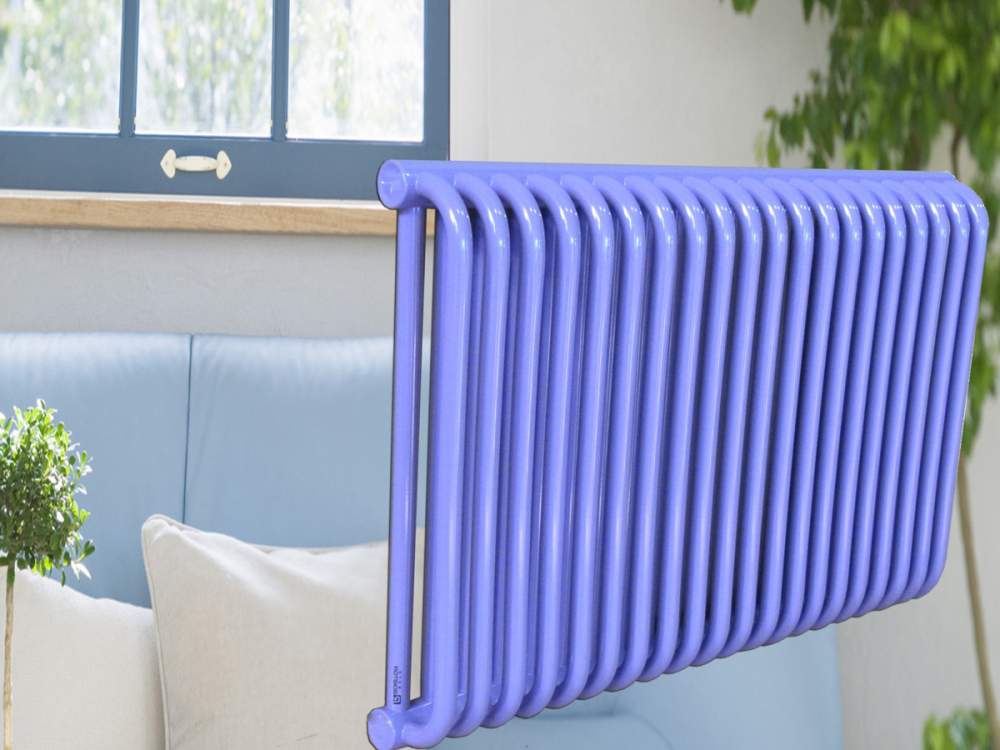
Performance characteristics of steel radiators
The founder of the tubular radiator is Robert Zender, and there is nothing surprising in the fact that the first company that was engaged in the production of such radiators was called Zehnder. Initially, a tubular radiator was used not for a heating system at all, but for cooling a motorcycle engine. After a while, such radiators have found application in the industrial field.
Among the operating parameters and characteristics of steel radiators are the following:
- Since high quality metal is used for the manufacture of such heating devices, they are able to withstand a fairly high operating pressure. These stainless steel radiators are best suited for individual buildings. In an individual heating system, there is no such high pressure as in multi-storey buildings, so steel radiators can serve for quite a long time. In addition, such radiators will be able to work without any interruptions.
- For the manufacture of such radiators, simple technologies are used, therefore their retail price is relatively low. Based on this indicator, you can choose the most suitable radiator for a particular room.

- Steel radiators have a fairly good resistance to hydraulic shocks. The sections of such radiators are welded without the use of various gaskets, which is why they have such a high resistance to mechanical damage.
- Appearance is the main advantage of such radiators. Iron radiators can be painted in any color you like best. They can be placed horizontally, angled or vertically. You can also add the number of sections to such radiators. With steel radiators, you can heat a room with any area.
- Steel radiators are pretty universal devices... They can be used with almost any fastening material. Steel radiators are usually sold complete with fasteners. Thanks to this, their installation can be carried out quite accurately and quickly.
Steel radiators for heating. Pros and cons
Arguments for"
- Due to the fact that they have a rather simple design, such radiators will last a long time. They have a fairly high strength, and the thickness of the walls is from 1.2 to 1.5 mm.
- Installation of steel heating radiators can be done independently. You do not need to have special knowledge or skill for this. If you need instructions for installing them, you can easily find them on the manufacturer's website. This instruction will help you install the heater based on your existing heating system.
- Iron heating radiators have excellent design features. Such a device will fit into almost any interior.

Arguments against"
- The main disadvantage of such radiators is their low resistance to corrosion. Such radiators can fail due to exposure to moisture. For this reason, it is not recommended to install them in a room with a high level of humidity. In addition, a system in which steel radiators are installed must not be left without water. If left without water for just a few weeks, they can fail.
- Such devices are highly sensitive to water hammer in the places where the welds are located.
- Some radiators are coated in factories with a poor quality paintwork. If the paint is of low quality, then the radiator will lose its original appearance after a few years, as the coating will begin to peel off.
Add a comment
The topic of heating their homes is always among Russians in winter and summer. In winter, we look at our radiators with the hope of a good heat return, in summer we start thinking about preparing for next winter. Steel radiators are important devices in the heating system.
A coolant heated to a certain temperature circulates through the radiator. The device of radiators ensures the transfer of heat from the coolant to the room. There is no doubt that our consumers have heard about steel heating radiators.
Computer literacy is expanding and allows you to learn that steel radiators are also known to everyone. If the first three types of radiators are sectional in terms of their design features, then steel radiators are divided into two types:
- Panel radiators
- Tubular radiators
Steel heating radiators in Russia in the markets for the sale of heating devices are of interest among buyers. Many models have already proven themselves well. Steel heating radiators are sold by Russian manufacturers and come to the market from abroad. Buyers love the quality, affordable price and heat output.
Installation of steel panel radiators
The construction of steel panel radiators consists of a double stamped sheet with vertical and horizontal collectors inside. The panels are welded along the contour with a continuous seam. Models can be with side and bottom connections:
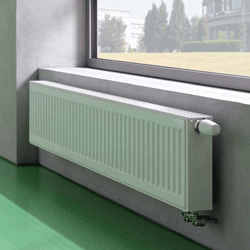

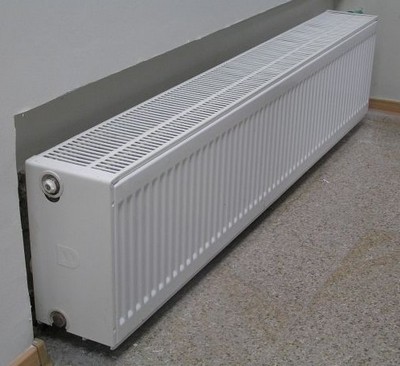
The panels are painted in a pleasant white color using foreign technologies.
By design, side or end panels may or may not be present. An air outlet grille is mounted on top of the radiator. In some models, it is not mounted, it depends on the manufacturer.
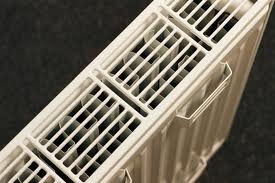
The picture shows corrugated sheets through the grating. The heat transfer of the steel radiator is increased by the corrugated steel fins. Corrugated sheets by resistance welding are welded to vertical channels through which the coolant moves.
 The picture on the left clearly shows the corrugations, the opening for the inlet of the coolant, which continues its movement along the horizontal collectors of each panel to the lower collector along the vertical channels inside the panels.
The picture on the left clearly shows the corrugations, the opening for the inlet of the coolant, which continues its movement along the horizontal collectors of each panel to the lower collector along the vertical channels inside the panels.
Steel radiators of this type can be equipped with: Mayevsky valve, thermostatic valve, metal plugs, wall mountings with screws and a passport.
The panels are made of high quality steel. Sheet thickness can vary from 1.15 mm to 1.4 mm. Working pressure from 9 atm to 10 atm. Heat carrier temperature 120 deg. FROM.
By design features, steel panel radiators are divided into types, where the first number means the number of panels, the second number of convective plates (corrugations):
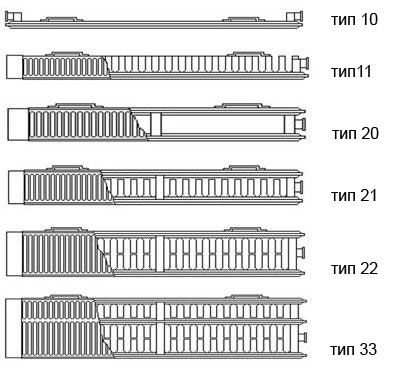
Consider the designs of all types of steel panel radiators:
Type 10 - one row of panels, in depth without ribbing;
Type 11 - one row of panels, one row of ribbing on the rear side of the panel, with side walls and an air outlet grille;
Type 20 - two rows of panels, without ribbing, with side walls and an air outlet grill;
Type 21 - two rows of panels with internal ribbing, with side walls and an air outlet grill;
A type 22 - two rows of panels, two rows of internal ribs, with side walls and an air outlet grille;
Type 33 - three rows of panels, three rows of internal ribs, side walls and an air outlet grille.
Overview of steel panel radiators (video)
Steel panel-type heating radiators are produced and sold in trade, both domestic and foreign.
Review of worthy brands of panel radiators:
- RosTerm (Russia)
- PRADO (Russia, Izhevsk), PRADO CLASSIC, PRADO UNIVERSAL
- Konrad (Russia)
- Lideya (Belarus)
- TEPLOVER (Ukraine, Chernigov)
- KAZTHERM (Kazakhstan)
- SOLE (Italy / Kazakhstan)
- KERMI (Germany)
- KORADO (Czech Republic)
- PURMO (Finland), PURMO COMPACT, PURMO VENTIL COMPAKT
- BUDERUS (Germany)
- BJORNE (Germany)
- HEATON (Turkey)
- BRAINERSTAR (Turkey)
Steel panel radiators are convenient for use in urban systems and with individual boiler equipment. Service life up to 10 years. We should not forget about the vulnerability to corrosion. The system must be closed to protect the batteries from air.
Installation of panel heating radiators
Steel radiators are easy to install, they can even be installed in packaging. Since they have a high heat transfer, the distance to the wall and from the floor is taken individually for each model:
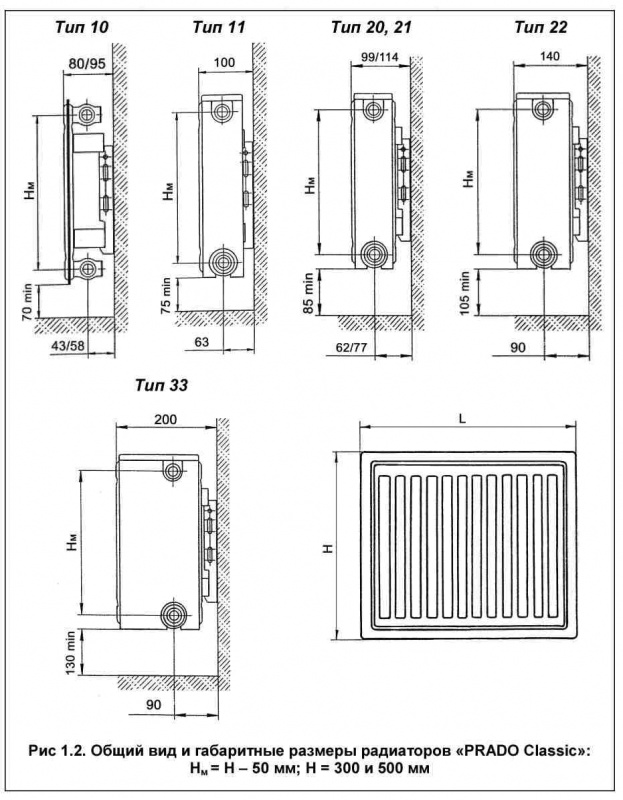
If the steel radiator is hinged, then it is attached to brackets with screws and dowels. If it is floor-standing, it is installed on the floor on racks and connected to the pipes in the usual way (see the device passport). Structurally, radiators can be connected to the coolant from the left, right or bottom.
Steel panel radiators in the interior of residential premises (video)
The device of steel tubular radiators
Tubular radiators are an interesting type of heating devices. Unlike panel ones, they better tolerate sudden drops in coolant pressure. But the presence welds and the wall thickness of the pipes from 1.5 mm to 2 mm warns you to be careful and use tubular radiators only for low-rise buildings with closed-type systems.
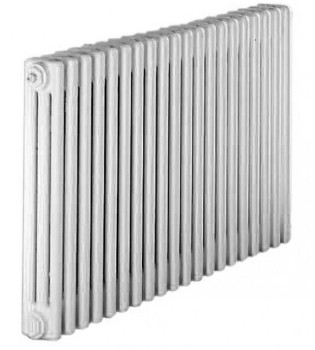
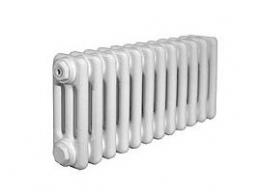
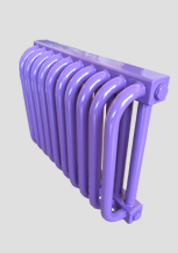
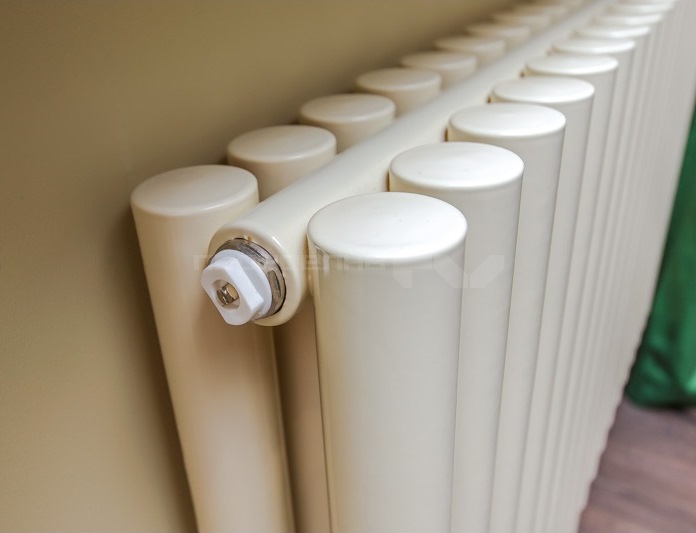 Famous brands of steel tubular radiators (there are not so many of them):
Famous brands of steel tubular radiators (there are not so many of them):
- RadStal (Russia)
- KZTO Radiator (Russia, Kimry): RS, RSK, Harmony, Effect
- Estet (Russia)
- Israp Tesi (Italy)
- Zehnder (Germany), Zehnder Bank Radiator
- Arbania (Switzerland and Germany): Karotherm, Creatherm, Heizwand, Entreetherm, Arbotherm, Grealux, Flagtherm, Plantherm, Optotherm
The first two pictures show steel radiators from RadStal. Attractive vertical structure flat pipes, this is how the conceived architectural solution was implemented In the third and fourth pictures, steel radiators RS and RSK of the KZTO Radiator plant. Consider the features of the design solutions of several brands.
Steel radiators from RadStal
Radiators have only side connection. Thickness of flat vertical pipes \u003d 1.5 mm. A section is formed from the tubes, this is clearly seen in the drawings.
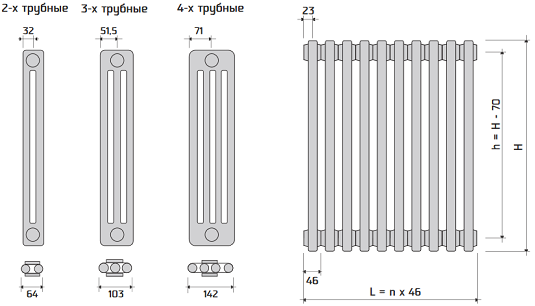
There can be two, three, four flat tubes in a section. The depth of the radiator depends on them: 64 mm, 103 mm, 142 mm.
The height can be from 304 mm to 1004 mm.
In length - from 460 mm to 1380 mm.
Working pressure \u003d 12 bar, coolant temperature \u003d 120 deg. FROM.
Radiators can be painted in any colors.
Steel radiators are intended for use in closed systems water heat supply.
2. KZTO Radiator (Russia, Kimry)
The device of tubular heating radiators by KZTO Radiator is presented in a large assortment:
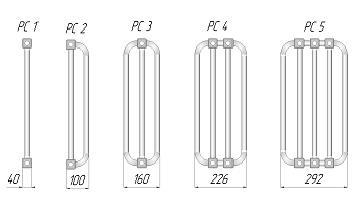
RS series.These are tubular columnar radiators with the number of pipes of each column from 1 to 5 pieces, combined at the top and bottom by collectors. It can be seen that the horizontal ones are made of a square profile. 40 x 40 mm square profile with 2 mm wall thickness. Vertical column pipes made of pipes with a thickness of 1.5 mm are welded to the manifolds.
The radiators above and below can have one, two or three horizontal collectors, depending on the series: RS-1, RS-2, RS-3, RS-4, RS-5.
Working pressure \u003d 15 atm, temperature \u003d 130 degrees. FROM.
Height of devices: 300, 500, 750, 900, 1000, 1200, 1500, 1750, 2000 mm.
The length of the devices is from 170 mm to 2056 mm. Depth of devices: 40, 100, 160, 226, 292 mm.

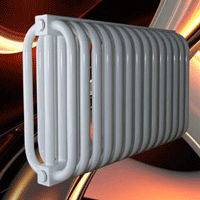
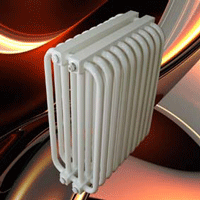
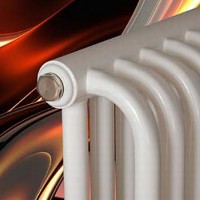
The first 3 photos show the PC series with square horizontal collectors. The 4th photo shows a steel radiator rSK seriesnot unlike the RS series, except that the horizontal collectors are round steel pipes.
The service life of these radiators is up to 25 years. Radiators RS and RSK are recommended for use in institutions with high hygienic requirements: medical and sports buildings, in residential buildings with one-pipe and two-pipe heating systems. It is convenient to wipe the dust in such radiators.
Harmony Series.These are also steel tubular radiators with the embodiment perfect solution heating problems, both in terms of aesthetics and efficiency.

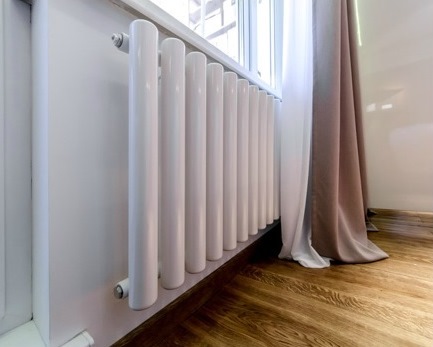
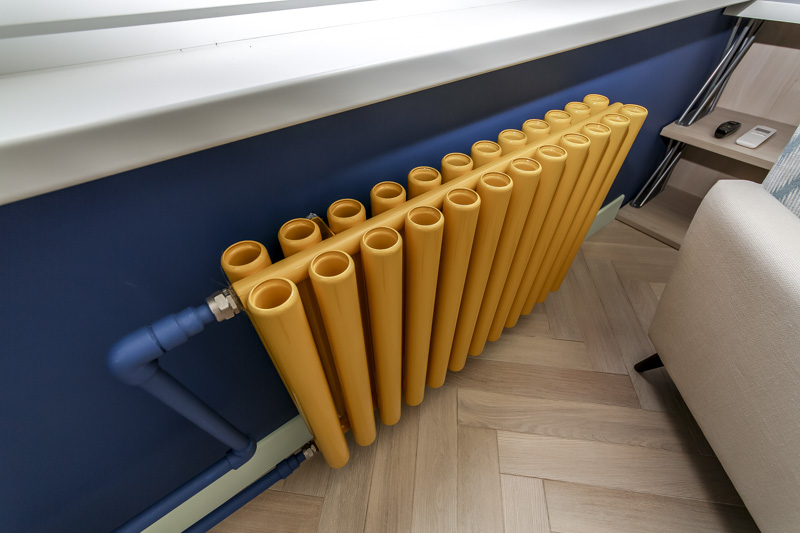
It is used in one-pipe and two-pipe systemsah heating residential and public buildings... Bottom connection only for two-pipe heating systems. Equipped with: brackets, plugs, air vent. To regulate the heat flow, valves from companies such as Danfos, Oventrop, Heimayer are used. Honevel. The device is interesting and worth your attention:
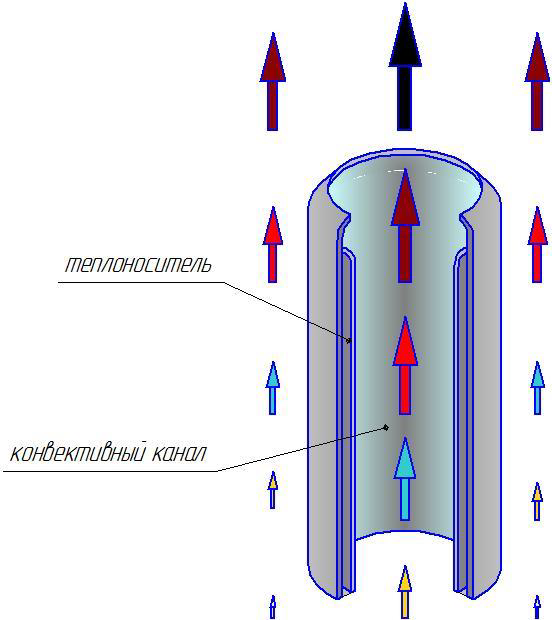 Steel radiators have upper and lower circular cross-section collectors connected by vertical column pipes. The column consists of two pipes of different diameters, which are inserted into each other and connected to each other.
Steel radiators have upper and lower circular cross-section collectors connected by vertical column pipes. The column consists of two pipes of different diameters, which are inserted into each other and connected to each other.
The coolant moves inside the column along the resulting annular volume. And, of course, along the horizontal collectors.
The inner cavity of the column provides additional convective circulation of heated air.
Radiators can be single-row and double-row. A decorative ring element is installed on the top of the speakers.
Center distance: from 155 to 2000 mm. Radial radiators are produced for curved walls (on request).
The figure shows both collectors and column pipes. Pipes are made with a diameter of 25 mm, 40 mm, 51 mm.
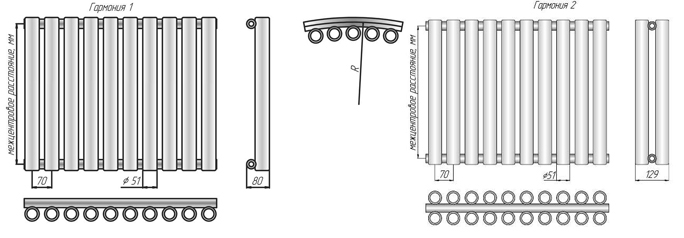
The company also manufactures radiators of this series with pipes and columns with closed ends of hemispherical shape.
Zavalinka series... On the basis of steel pipe heating radiators from the RS and Harmony series, the Zavalinka series was created. The seat is made of wood, you can sit and relax, The radiator itself is on the floor on special racks.
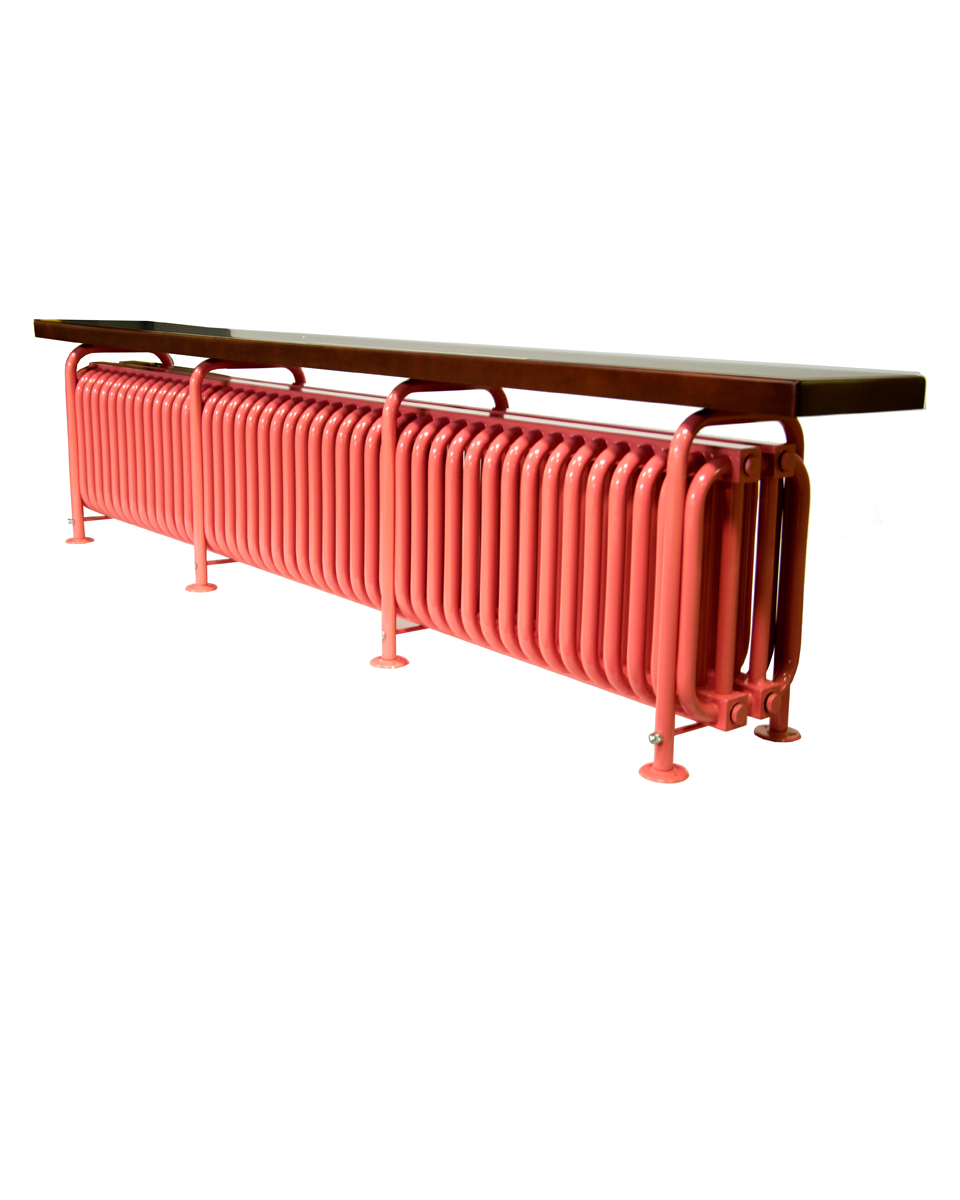 Parallels Series. The developers found it necessary to combine the pipe design round and rectangular sections.
Parallels Series. The developers found it necessary to combine the pipe design round and rectangular sections.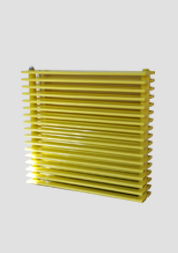 Radiators can also be with a mirror insert.
Radiators can also be with a mirror insert.
Radiator height: 334 mm to 2034 mm.
Radiator length: 76 mm to 2254 mm.
Number of radiator sections: from 3 pcs. up to 90 pcs.
Working pressure 9 atm, temperature \u003d 130 degrees. FROM.
It is convenient to install radiators in high lobbies of cottages.
3. Estet (Russia)
Look at Estet tubular steel heating radiators using the author's video:
Design radiators of domestic and foreign production are widely offered to consumers for selection:
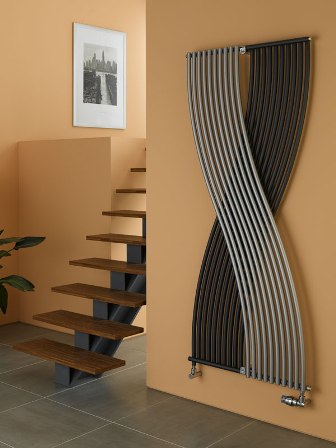

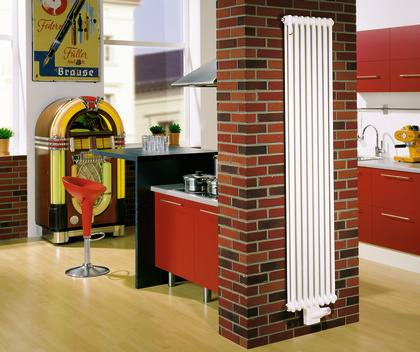
Overview of steel heating radiators with design solutions in the video:
Always install and operate heating radiators in accordance with the passport data and your house will be warm and cozy.
In contact with
Warmth in the house is the most important component of comfort and coziness. It would be a mistake to think that the comfortable room temperature depends entirely on the heating system. The type of radiators installed in the apartment is also very important. Steel panel radiators that have appeared not so long ago are very popular among developers. They are recognized as the most common in the world heating structure, confidently displacing traditional cast iron batteries from the market. Steel appliances are varied and have many advantages. How to choose the right system? Let's figure it out.
Where can such a battery be installed?
Steel radiators can be installed in various systems, but for each there are certain nuances. We'll look at them now.
Autonomous heating systems
Steel appliances are great for stand-alone structures... Homeowners only need to monitor the fluid pressure in the system, it should not exceed 10-15 bar. In addition, attention should be paid to the quality of the coolant. Despite the fact that steel is relatively resistant to corrosion, it is not recommended to expose radiators to long-term exposure to aggressive environments. The manufacturer guarantees that, subject to the use of filters and timely regulation of the pressure in the system, the devices will last at least 20 years.

Steel devices can be used both in autonomous and centralized heating systems. In the first, they will last much longer.
District heating
For buildings connected to district heating, steel radiators are also suitable. The working pressure of the devices is 10-15 bar. Considering that the pressure in the system is usually no more than 6 bar, a certain margin of safety remains. The quality of the coolant in such a system is far from the recommended one. The water is often too hard with the addition of suspended solids. All this leads to the gradual accumulation of deposits inside the devices and abrasive destruction of steel devices. They will be able to work in the centralized heating system for about 10 years.
Steel equipment can be installed in trade pavilions, production facilities, warehouses and other structures with a closed heating system. The low cost of the devices allows you to equip spacious buildings with minimal costs. Steel devices can be installed in almost any room, but they show their qualities best of all in autonomous systems heating.
We also invite you to listen to the opinion of experts:
Design features of steel radiators
There are two types of steel radiators with different designs. Let's take a closer look at each of them.
Option # 1 - panel devices
The devices are a kind of panel that is attached to the wall or directly to the floor. The design of such devices is quite simple. The panel is welded from two plates, between which the coolant circulates. The width of the elements is 1.2-1.5 mm, there are stamped channels, the parts are joined using spot welding. Steel panel radiators are distinguished by their high heat transfer capacity and attractive appearance. Such equipment successfully combines the characteristics of sectional and convection radiators.
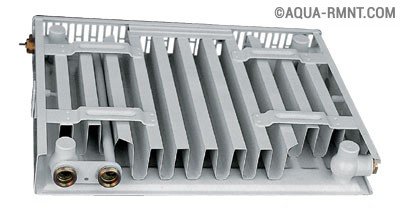
Panel radiator consists of two plates with stamped channels, connected by spot welding
The advantages of panel instruments include their wide range. Devices of various configurations and sizes can be found on sale. In addition, the equipment differs in the type of connection to the piping:
- Lower. It assumes the possibility of installing a thermostatic valve, on which a thermostat is installed that controls the temperature of the room.
- Lateral. The most affordable option, which makes it possible to use the natural circulation of the coolant.
In addition, you can find steel radiators on sale equipped with two types of connections at the same time.
To increase heat transfer, the radiators are equipped with several panels. Since the structure transfers heat only to the outer planes, additional plates in the shape of the letter P are welded to the inner ones. This way it is possible to increase the heat transfer surface. Internal elements function according to the principle. Thus, the share of convection heat accounts for 75%. The disadvantages of such devices include a lot of weight. For example, a three-panel radiator weighs almost the same as a cast iron one. The large amount that is inside the device reduces the effectiveness of the temperature regulation being performed. In addition, it is quite difficult to clean such a device from dirt.
Option # 2 - tubular devices
The devices represent a system of lower and upper collectors connected by vertical pipes. The latter can have a maximum of six rows. Such devices are recommended for use in low-rise buildings. The operating pressure in tubular steel radiators is 8-10 atm. The wall thickness of the devices is 1.3-1.5 mm. Such batteries are produced in sectional and non-sectional, maximum length - 3 m. The equipment is hygienic, easy to clean and has a high level of safety. Some models cover the inside polymer coating, which prolongs their service life.
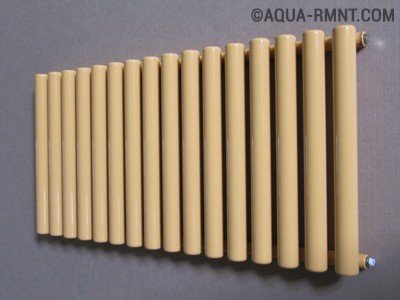
Steel tubular radiators are distinguished by the presence of an upper and lower collector system, connected by tubes. Can be produced in sectional and non-sectional versions
The advantages of tubular devices include:
- High working pressure for possible water hammer. However, it is best to use tubular devices in autonomous heating systems, where the coolant pressure is relatively small.
- The simplicity of the design, which implies the absence of difficulties in the manufacture of the device and, accordingly, their low cost.
- The design features of the devices, such as welding of sections without gaskets, provide high resistance to mechanical damage.
- Ease of installation. Various connection methods make it possible to use steel tubular devices almost anywhere. Most models are equipped with fasteners and communication parts, which allows them to be installed quickly and securely.
- Versatility. The devices are compatible with almost any material used for mounting.
- The possibility of sectional addition for sectional models, which implies a decrease or increase in the number of sections at the request of the owner.
- Variety of accommodation options. The devices can be installed horizontally, at an angle or vertically.
A number of models, so-called design radiators, offer special possibilities for interior planning. These devices are available in the form of stair rails, mirror frames, interior partitions etc.

Sectional tubular radiators can have a different number of sections. Their number is determined by the owner of the property
Why wouldn't you want such a radiator for yourself?
It should be noted that of all types heating equipment it is steel structures that are most susceptible to corrosion, which significantly affects their service life. Laboratory studies have shown that within a year, a steel battery loses about 0.1 mm of its thickness due to corrosion processes. Thus, a sheet of steel 1.2 mm thick, even under the most favorable conditions, will be able to withstand no more than ten years of operation, which cannot be considered a high indicator.
In addition, the connecting seams are spot welded, which makes these areas even more susceptible to corrosion. Air trapped in the system significantly accelerates this process. This is another reason why it is not recommended to install steel radiators in apartment buildings with a centralized heating system, where water is drained after the end of the heating season. It should be borne in mind that panel-type devices are least resistant to. This is because the channels are small in size. At high pressure, such a device swells and can rupture, especially at the joints and seams.

Steel appliances can also be produced in the form of so-called design radiators. Such devices fit perfectly into the interior and attract with an unusual appearance.
An example of a strength test:
How to choose the right option for you?
What characteristics of steel heating radiators, in addition to their power, should be followed when choosing?
The size of the device should be selected based on the parameters and area of \u200b\u200bthe heated room. The devices differ in depth (type 33, 22, 11), in length (from 3000 to 400 mm) and in height (from 900 to 300 mm). Each standard size has its own heat transfer parameters. The larger it is, the correspondingly larger area such a radiator can heat. The numbers 33, 22 and 11, denoting the type of radiator, indicate the number of so-called "accordions" or U-shaped plates attached to the equipment. One plate is designated 11, two - 22 and three - 33.
These radiators are generally available in two versions: side or bottom connection. The first option is considered standard. It is also the most common. This is due to the fact that devices with bottom connection are significantly more expensive, which is associated with the design features of the equipment. Such devices are conventional side-connected radiators, equipped with leads that are lowered to the bottom of the device. This addition complicates the design and requires additional components, which is reflected in the cost of equipment. 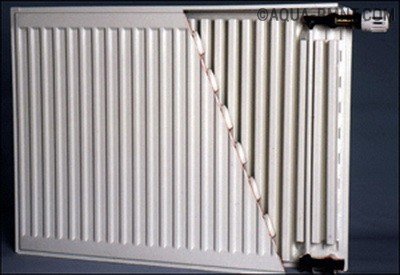
It is worth paying attention to the manufacturer. It should be noted that the method of manufacturing devices for all companies is practically the same. But the cost of devices varies greatly. It is determined based on the design, brand and size of the device. Often, you can buy a high-quality domestic device and not overpay for a foreign brand. When choosing the best option, the following nuances are taken into account:
- The device should be equipped with a Mayevsky crane so that it can be used if necessary. It is also good that the device has a tap that blocks the flow of the coolant, which is necessary in the event of an emergency.
- The deeper and lower the radiator is supposed to be placed, the more evenly the room will warm up.
- The most practical are batteries with thermostats, manual or automatic.
- The device installed under the window must occupy at least 50-75% of the width of the window opening.
Steel radiators are among the most demanded heating devices. They are distinguished by a modern stylish appearance, high heat dissipation, affordable cost and are widely used in country houses, apartments, offices and shops. Experts do not recommend installing devices in rooms with high humidity and mounting them with caution in apartments with centralized heating... But in autonomous heating systems, steel appliances serve for a long time and flawlessly.



